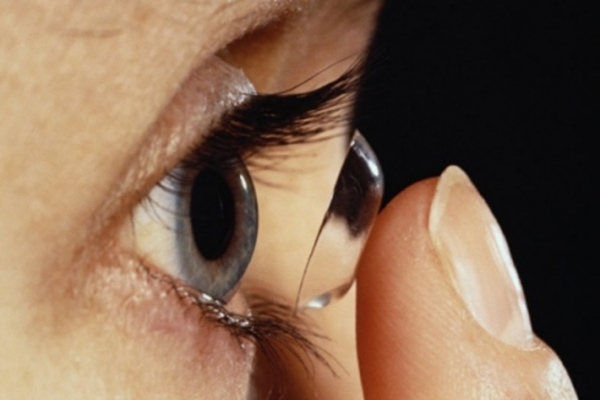Conjunctivitis Infection is a very common eye disorder. It is an inflammation of the conjunctiva, a transparent layer of cells covering the entire surface of the eye, including the inside of the eyelid. Inflammation gives an appearance of the red-eye, by diffuse irritation of the conjunctiva.
Conjunctivitis Infection: Causes
Conjunctivitis may have been of infectious origin, linked to a microorganism. It is a virus or a bacterium, most often caused by a virus, a little more rarely by a bacterial infection. One eye touched in general, then quite often the other eye touched in the second time.
Viral conjunctivitis, often due to adenovirus, causes clear aqueous secretions. Bacterial conjunctivitis, instead, produces purulent, greenish-yellow, thicker secretions, which stick the eyelids in the morning. Both forms are highly contagious—some conjunctivitis is linked to sexually transmitted infections, such as chlamydiae or gonococci (in newborn infants). Conjunctivitis can also result from an allergic reaction, for example, pollen. Both eyes are then touched. The eyes bite, and the conjunctive membrane is irritated. Finally, conjunctivitis can be caused by irritation, contact between the eye and chemicals, or a foreign body. Secretions are sometimes present but usually disappear after 24 hours.

Conjunctivitis Infection: Symptoms
- Pains to an eye or both eyes, often to feel like a grain of sand in the eye
- Tingling with one or both eyes
- A feeling of burning, scratching, or abrasion
- Secretions that sometimes form a crust during the night
- Redness of the affected eye (or both eyes)
- Reflex tearing

Conjunctivitis Infection: Risk factors
- Contact with a person with infectious conjunctivitis.
- Exposure to allergens or chemicals.
- Inadequate maintenance and prolonged use of contact lenses
- Poor hygiene (lack of handwashing that transmits germs)

Conjunctivitis Infection: Prevention
Basic Preventive Measures include:
- Basic hygiene measures and proper cleaning of contact lenses can help prevent conjunctivitis.
- Wash hands before putting or removing lenses,
- Wash hands after blowing nose and sneezing. (Otherwise, microbes on the fingers can reach the eye if rubbed)
- Pay attention to contact with a child with conjunctivitis.
- Avoid eye shadows, potentially irritating mascara.
Once the conjunctivitis is declared, insist even more on the following habits:
- Avoid touching your eyes with your hands.
- Wash your hands frequently with soap or disinfectant.
- Wash your towels, washcloths, and pillowcases regularly. Do not share them with others.
- Avoid cosmetic products that apply around the eyes, especially mascara. Discard potentially contaminated mascaras.
- Follow the directions of your optometrist or ophthalmologist regarding the maintenance of contact lenses. If possible, dispose of potentially contaminated solutions, cases, and contact lenses.

Medical treatments of conjunctivitis
Treatment varies depending on the type of conjunctivitis:
- Home treatment: Soak a clean washcloth or a cloth under the cool tap water, wring it slightly and then apply it to the closed eye.
- Antibiotic eye drops (drops of antibiotics to put in the affected eye) can eliminate the infection within a few days when it is infectious conjunctivitis. It is essential to follow the treatment until the end, to avoid the reappearance of the infection, and then to drop the drops that only keep for a few days in the refrigerator.

Viral conjunctivitis
Viral conjunctivitis is not treated with antibiotic drops. The treatment consists of washing the eye with physiological saline, and in drops of antiseptic eye drops. Antibiotics in drops are sometimes indicated when the virus has weakened the conjunctiva, which is infected with a bacterium. Symptoms usually disappear within 10 to 15 days. Sometimes it can be complicated by keratitis, a deeper involvement of the cornea with superficial ulcers, causing discomfort to the vision. In the case of visual discomfort, it is necessary to consult.
Conjunctivitis Infection: Allergic reaction
The treatment consists of firstly regular washing with physiological saline, which makes it possible to eliminate as much as possible of allergic substances in contact with the conjunctiva (for example, the pollen grains). In the treatment of a crisis, an anti-allergic drug, an antihistamine in drops in the eyes, is prescribed. When it comes to a seasonal or long-lasting allergy, the doctor also prescribes a background treatment for eye drops to take regularly (anti-degranulate treatment mastocyte). Allergy to a cosmetic product is, first of all, treated with the avoidance of allergic cosmetics.
Conjunctivitis Infection: Common irritation
A physiological saline rinse may be sufficient. Artificial tears purchased in pharmacy can help relieve irritation.


